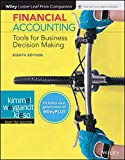
(a)
Annual Report: It is a comprehensive financial report that shows all the business activities that takes place throughout the previous financial year. Its purpose is to provide the complete financial information of a company’s financial activities to its users in order to help them analyze and take well informed decisions.
Financial Ratios: Financial ratios are the metrics used to evaluate the overall financial performance of a company during a specific period of time.
To Compute: the return on common
(a)
Answer to Problem 11.2EYCT
Compute the return on common stockholders’ equity:
For Company CS
For Company VF
Working notes:
Compute average stockholders’ equity for Company CS.
Compute average stockholders’ equity for VF.
Explanation of Solution
Return on common stockholders’ equity ratio: It is a profitability ratio that measures the profit generating ability of the company from the invested money of the shareholders. The formula to calculate the return on common stockholders’ equity is as follows:
Therefore, for Company CS the Return on Common Stockholders’ equity is 10.9% and, for Company VF the Return on Common Stockholders’ equity is 17.9%
To Compute: the debt to assets ratio for Company CS and Company VF.
Answer to Problem 11.2EYCT
Compute the debt to assets ratio:
For Company CS
For Company VF
Working note:
Compute total liabilities value for Company VF.
Explanation of Solution
Debt to assets ratio: It is the ratio that measures the ability of a company to meet its long-term obligations out of its total assets available. It shows the relationship of total liabilities and total assets.
The formula to calculate the debt to assets ratio is as follows:
Therefore, for Company CS the Debt to assets ratio is 24.4% and, for Company VF the Debt to assets ratio is 43.6%.
To Compute: the return on assets ratio for Company CS and Company VF.
Answer to Problem 11.2EYCT
Compute the return on assets ratio:
For Company CS
For Company VF
Working notes:
Compute average total assets for Company CS.
Compute average total assets for Company VF.
Explanation of Solution
Return on assets is used to measure the overall earning ability of the company. Thus, it shows the relationship between the net income and the average total assets.
The formula to calculate the return on assets ratio is as follows:
Therefore, for Company CS the Return on assets is 8.4% and, for Company VF the Return on assets is 10.3%.
(b)
To explain: the conclusions concerning the companies’ profitability ratios can be drawn on these ratios.
(b)
Explanation of Solution
From the above calculated ratios in part a, the following conclusions can be drawn concerning both companies’ profitability:
- Return on assets for Company CS is 8.3% and that of Company VF is 10.3%. Thus, the higher ratio percentage of Company VF indicates that it is more profitable by generating more net income through effective utilization of total assets.
- Return on stockholders’ equity for Company CS is 10.9% and that of Company VF is 17.9%. Thus, the higher ratio percentage of Company VF indicates that it is more profitable as its shareholders earn more income from each equity share available to common stockholders.
To find: the company that relies more on debt to boost its return to common shareholders.
Answer to Problem 11.2EYCT
Company VF is the company that relies more on debt to boost its return to common shareholders.
Explanation of Solution
Debt to assets for Company VF is 43.6%. Thus, the higher ratio percentage of Company VF indicates that it relies more on the borrowed funds than its own available assets. Since its interest rate on borrowed funds is less than its return on assets, it provides more return on common stockholders’ equity than Company CS.
However, more reliance on debts than assets for Company VF would increase the risk of non-repayment of debts and would adversely affect its liquidity position.
(c)
To Compute: the payout ratio for Company CS and Company VF.
(c)
Answer to Problem 11.2EYCT
Compute the payout ratio:
For Company CS
For Company VF
Explanation of Solution
Payout Ratio: It refers to a measure that evaluates the amount of dividends paid to the shareholders out of the net income earned by a corporation. It is generally expressed as a percentage. The formula to calculate the payout ratio is as follows:
Therefore, for Company CS the Payout ratio is 28.1% and, for Company VF the Payout ratio is 45.72%.
To find: which company pays out a higher percentage of its earnings.
Explanation of Solution
Corporation VF has higher percentage of payout ratio of 45.72% than Company CS of 28.1%.
Want to see more full solutions like this?
Chapter 11 Solutions
Financial Accounting: Tools for Business Decision Making, 8e WileyPLUS (next generation) + Loose-leaf
- I am searching for the correct answer to this general accounting problem with proper accounting rules.arrow_forwardCan you help me solve this general accounting question using valid accounting techniques?arrow_forwardPlease provide the accurate answer to this general accounting problem using appropriate methods.arrow_forward
 Cornerstones of Financial AccountingAccountingISBN:9781337690881Author:Jay Rich, Jeff JonesPublisher:Cengage Learning
Cornerstones of Financial AccountingAccountingISBN:9781337690881Author:Jay Rich, Jeff JonesPublisher:Cengage Learning Financial Accounting: The Impact on Decision Make...AccountingISBN:9781305654174Author:Gary A. Porter, Curtis L. NortonPublisher:Cengage Learning
Financial Accounting: The Impact on Decision Make...AccountingISBN:9781305654174Author:Gary A. Porter, Curtis L. NortonPublisher:Cengage Learning Financial AccountingAccountingISBN:9781337272124Author:Carl Warren, James M. Reeve, Jonathan DuchacPublisher:Cengage Learning
Financial AccountingAccountingISBN:9781337272124Author:Carl Warren, James M. Reeve, Jonathan DuchacPublisher:Cengage Learning




